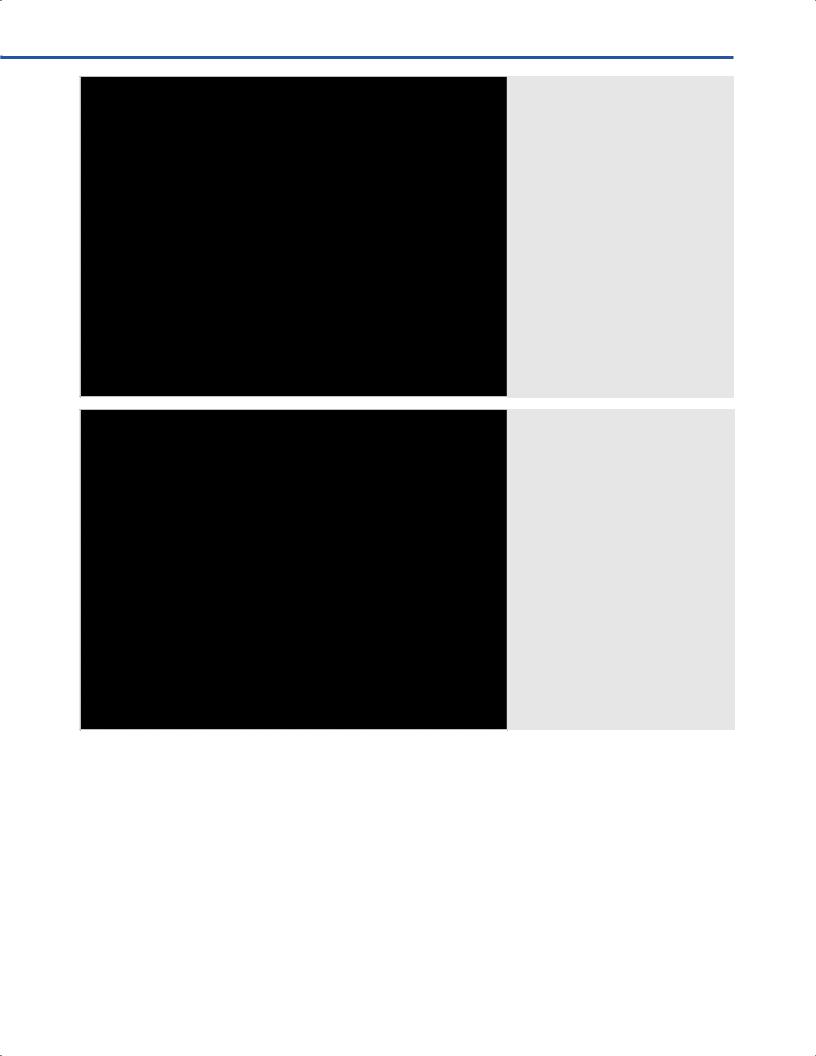
- •Operative Cranial Neurosurgical Anatomy
- •Contents
- •Foreword
- •Preface
- •Contributors
- •1 Training Models in Neurosurgery
- •2 Assessment of Surgical Exposure
- •3 Anatomical Landmarks and Cranial Anthropometry
- •4 Presurgical Planning By Images
- •5 Patient Positioning
- •6 Fundamentals of Cranial Neurosurgery
- •7 Skin Incisions, Head and Neck Soft-Tissue Dissection
- •8 Techniques of Temporal Muscle Dissection
- •9 Intraoperative Imaging
- •10 Precaruncular Approach to the Medial Orbit and Central Skull Base
- •11 Supraorbital Approach
- •12 Trans-Ciliar Approach
- •13 Lateral Orbitotomy
- •14 Frontal and Bifrontal Approach
- •15 Frontotemporal and Pterional Approach
- •16 Mini-Pterional Approach
- •17 Combined Orbito-Zygomatic Approaches
- •18 Midline Interhemispheric Approach
- •19 Temporal Approach and Variants
- •20 Intradural Subtemporal Approach
- •21 Extradural Subtemporal Transzygomatic Approach
- •22 Occipital Approach
- •23 Supracerebellar Infratentorial Approach
- •24 Endoscopic Approach to Pineal Region
- •25 Midline Suboccipital Approach
- •26 Retrosigmoid Approach
- •27 Endoscopic Retrosigmoid Approach
- •29 Trans-Frontal-Sinus Subcranial Approach
- •30 Transbasal and Extended Subfrontal Bilateral Approach
- •32 Surgical Anatomy of the Petrous Bone
- •33 Anterior Petrosectomy
- •34 Presigmoid Retrolabyrinthine Approach
- •36 Nasal Surgical Anatomy
- •37 Microscopic Endonasal and Sublabial Approach
- •38 Endoscopic Endonasal Transphenoidal Approach
- •39 Expanded Endoscopic Endonasal Approach
- •41 Endoscopic Endonasal Odontoidectomy
- •42 Endoscopic Transoral Approach
- •43 Transmaxillary Approaches
- •44 Transmaxillary Transpterygoid Approach
- •45 Endoscopic Endonasal Transclival Approach with Transcondylar Extension
- •46 Endoscopic Endonasal Transmaxillary Approach to the Vidian Canal and Meckel’s Cave
- •48 High Flow Bypass (Common Carotid Artery – Middle Cerebral Artery)
- •50 Anthropometry for Ventricular Puncture
- •51 Ventricular-Peritoneal Shunt
- •52 Endoscopic Septostomy
- •Index

3 Anatomical Landmarks and Cranial Anthropometry
Victor Fernández Cornejo, Javier Abarca Olivas, Pablo González-López, and Iván Verdú-Martínez
3.1 Introduction
In this chapter, we describe surface landmarks of the skull and how they relate to underlying important cortical structures.
These correlations are particularly important and a great aid, when planning surgical approaches, as they assist in tailoring the approach, avoiding unnecessary exposure and minimizing risk of injuries to the brain parenchyma.
Even though there is an individual variability among skulls and underlying vascular and cortical anatomy, the knowledge of these markers is of paramount importance to “outline” the position of vital structures, which will be uncovered during the surgical approach.
3.2 Main Cranial Landmarks (Fig. 3.1)
Looking at the skull, these landmarks become readily available in the diferent aspects as seen in Fig. 3.1.
•Frontal view: Nasion, Bregma, and Frontozygomatic point (Fig. 3.1A).
•Lateral view: Coronal Suture, Stephanion, Pterion, Frontozygomatic Point, Squamous Suture, and Temporal Line (Fig. 3.1B).
•Superior view: Bregma, Lambda, Sagittal Suture, and Coronal Suture (Fig. 3.1C).
•Posterior view: Lambdoid suture, Opisthocranion, Inion, Asterion, and Superior Nuchal Line (Fig. 3.1D)
While some of these landmarks represent intersections of different bones of the neurocranium, some are marks left on the
bone by the attachment of muscles or are simply relevant to the palpation of the skull (i.e., opisthocranion).
•Nasion (Na): Point of intersection between the two nasal bones and the frontal bone.
•Bregma (Br): Point of intersection between the coronal and sagittal suture.
•Frontozygomatic Point (FzP): Suture in the lateral wall of the orbit, between the frontal and zygomatic bones.
•Superior Temporal Line (STL): Line of attachment of the temporal fascia to the skull, crossing the middle of the parietal bone in an arched direction.
•Stephanion (St): Point of intersection between the superior temporal line and coronal suture.
•Pterion (Pt): Area where frontal, parietal, temporal, and sphenoid bones join together.
•Lambda (La): Point of intersection between the sagittal and lambdoid sutures.
•Opisthocranion (Op): Most prominent point of the occipital bone.
•Inion (In): External occipital protuberance.
•Asterion (As): Posterior end of the parieto-mastoid suture.
•Superior Nuchal Line (SNL): Line of insertion of the semispinalis capitis muscle in the occipital bone.
3.3 Cranial Anthropometry (Fig. 3.2)
Once the work of memorizing these landmarks is done, they can be put to good use in calculating distances and relationships among these landmarks and the underlying brain.
Fig. 3.1 Main cranial landmarks. (A) Frontal view. (B) Lateral view. (C) Superior view. (D) Posterior view.
Abbreviations: As = asterion; Br = bregma; Cos = coronal suture; FzP = frontozygomatic point; In = inion; La = lambda; Ls = lambdoid suture; Na = nasion; Op = opisthocranion; Pt = pterion; SNL = superior nuchal line;
SqS = squamous suture; SS = sagittal suture; St = stephanion; STL = superior temporal line.
13

II Planning, Patient Positioning, and Basic Techniques
3.3.1 Main Measurements of The Skull
Approximate distance between important landmarks in adult skull:
•NasionBregma: 13 cm
•Nasion-Lambda: 24-25 cm
•Bregma-Lambda: 12-13 cm
•Pterion-Frontozygomatic Suture: 3 cm
•Opisthocranion-Inion: 2 cm
•Lambda-Opisthocranion: 2-4 cm
•Inion-Lambda: 4-6 cm
3.3.2 Location of the Main Cerebral
Sulci And Gyri
Some of the important cerebral landmarks can be located with good approximation with the help of artifcial lines constructed on the previously described bony and surface markers, considering the variability among patients related to individual anatomy and concurrent pathologies.
•The Sylvian Fissure (SF). A line that is constructed along the sagittal convexity helps determine the distance from Nasion to Inion. It is important to locate the Sylvian Fissure as it courses parallel (a few mm above or below) a line that joins the Frontozygomatic Point to the three-quarter point of the Nasion-Inion mid-sagittal line on the lateral surface of the head (Fig. 3.2A).
•The Central Sulcus (CS). It runs parallel or along a line constructed connecting the Superior Rolandic Point (SRP) and the Inferior Rolandic Point (IRP). SRP is 5 cm behind the Bregma and IRP is 2.5 cm behind the Pterion (Fig. 3.2B).
•Precentral Gyrus (PreCG). It is located 4.5 cm posterior to the Bregma (midline) and 2.5 cm posterior to the Stephanion (lateral surface) (Fig. 3.2C).
•Postcentral Gyrus (PostCG). Situated 6.5 cm posterior to the Bregma (midline) and 4 cm posterior to the Stephanion (lateral surface) (Fig. 3.2C).
•Calcarine Sulcus. It is located 3-4 cm inferior to the Lambda and 2 cm superior to the Inion, on the mesial aspect of the occipital lobe (Fig. 3.2D).
3.4 Sulcal Key Points. Correlation with Craniometric Points
3.4.1 Anterior Sylvian Point (ASP) (Fig. 3.3)
•Description: It is an enlargement of the Sylvian Fissure, just inferior to the triangular part and anterior to the opercular part of the Inferior Frontal Gyrus (IFG) (Fig. 3.3A).
•Craniometric correlation: On the cranial surface, it relates well to the Anterior Squamous Point (ASqP). This is located on the most anterior segment of the Squamous Suture (SqSut) just posterior to the Pterion (Fig. 3.3B, Fig. 3.3C).
•Clinical implications: It represents the starting point to open the SF and localizes the insular apex. Middle cerebral artery bifurcation is deeper and 1-2 cm anterior to it.
•Correlation: The distance between the Anterior Sylvian Point (ASP) and the Inferior Rolandic Point (IRP) along the Sylvian Fissure is 2-3 cm (Fig. 3.3D).
3.4.2 Inferior Rolandic Point (IRP) (Fig. 3.4)
•Description: It represents the intersection of the lower extremity of the Central Sulcus and the Sylvian Fissure (Fig. 3.4A).
•Craniometric correlation: On the cranial surface the Superior Squamous Point (SSqP) is a good landmark. It represents the intersection between the Squamous Suture and a vertical line coming from the preauricular depression, just in front of the tragus. The average vertical height of this segment is 4 cm above the zygoma. (Fig. 3.4B). The Inferior Rolandic Point is located 2.5 cm posterior to the Pterion along the Sylvian Fissure.
Fig. 3.2 Location of the main cerebral sulci and gyri. (A) Measure the distance along the sagittal convexity from nasion to inion. Mark the midpoint (1/2) and the
three-quarter point (3/4). The line from the frontozygomatic point and the three-quarter point represent approximately the Sylvian sure (SF). ( B) The central sulcus (CS) is represented by the line connecting the superior rolandic point (SRP) and the inferior rolandic point (IRP). (C) Location of the precentral and postcentral gyri. (D) The calcarine sulcus.
Abbreviations: Br = bregma; CS = central sulcus; In = inion; IRP = inferior rolandic point; Na = nasion; PostCS = postcentral sulcus; PreCS = precentral sulcus;
Pt = pterion; SF = Sylvian sure;
SRP = superior rolandic point; St = stephanion.
14

3Anatomical Landmarks and Cranial Anthropometry
•Clinical correlation: The Inferior Rolandic Point indicates the lower position of the Central Sulcus and with a good approximation the position of the Heschl’s Gyrus. Removal of the superior and middle temporal gyri posterior to the Inferior Rolandic Point in the dominant hemisphere has a high risk of causing permanent dysphasia as it damages Wernicke’s Area.
3.4.3 Point of Intersection Between
Inferior Frontal Sulcus and Precentral
Sulcus (IFS/PreCS) (Fig. 3.4)
•Description: It is the point of intersection between the
Inferior Frontal Sulcus and the Precentral Sulcus (Fig. 3.4A).
Fig. 3.3 The Anterior Sylvian Point (ASP). (A) The ASP is surrounded by the pars orbitalis (red), pars triangularis (green) and pars opercularis (yellow) of the inferior frontal gyrus (IFG) superiorly and by the superior temporal gyrus (STG) (blue) inferiorly. (B) The anterior squamous point (ASqP) is the craniometric point for the ASP. (C) The anterior squamous point (ASqP) is located on the most anterior segment of the SqSut just in the pterion. (D) Correlation of the ASP with the inferior rolandic point (IRP). Abbreviations: ASP = anterior Sylvian
point; ASqP = anterior squamous point; IRP = inferior rolandic point; Op = pars opercularis; Orb = pars orbitalis;
Pt = pterion; SqSut = squamous suture; St = stephanion; STG = superior temporal gyrus; Tri = pars triangularis.
Fig. 3.4 The Inferior Rolandic Point (IRP) and the Inferior Frontal Sulcus/Precentral Sulcus Intersection Point (IFS/PreCS).
(A) The IRP is the intersection of the central sulcus (CS) (or its prolongation) with the Sylvian sure (SF) (blue). IFS/PreCS intersection point is the point of intersection of the inferior frontal sulcus (IFS) and the precentral sulcus (PreCS) (red). (B) IRP
is underneath the superior squamous
point (SSqP). (C) IFS/PreCS intersection point lies 2 cm posterior to the Stephanion (St). Abbreviations: CS = central sulcus; IFS = inferior frontal sulcus; PreCS = precentral sulcus; SF = Sylvian sure; SSqP = superior squamous point; St = stephanion.
•Craniometric correlation: On the cranial vault the Stephanion (St) corresponds to the intersection of the Coronal Suture (Cos) and the Superior Temporal Line. Normally the point of intersection between the Inferior Frontal Sulcus and Precentral Sulcus (IFS/PreCS) lies 2 cm posterior to the Stephanion (Fig. 3.4C).
•Clinical implications: It helps localizing the Precentral Gyrus in the inferior third level, which corresponds to the motor activation area of the face and indicates the posterior and superior limits of the opercular portion of the Inferior Frontal Gyrus.
•Correlation: The point of intersection between the Inferior Frontal Sulcus and the Precentral Sulcus corresponds to the superior limit of the Inferior Frontal Gyrus at its opercular part at a distance of 2.5-3 cm from the Sylvian Fissure.
15

II Planning, Patient Positioning, and Basic Techniques
3.4.4 Point of Intersection Between
the Superior Frontal Sulcus and
Precentral Sulcus (SFS/PreCS) (Fig. 3.5)
•Description: It represents the intersection of the Superior Frontal Sulcus and the Precentral Sulcus (Fig. 3.5A).
•Craniometric correlation: On the cranial surface, it relates well to the Posterior Coronal Point (PCoP). It corresponds to the area located 3 cm lateral to the sagittal suture and 2 cm posterior to the coronal suture (Fig. 3.5B, 3.5C).
•Clinical implications: It is an important neurosurgical corridor for the frontal and anterior ventricular access. It represents the posterior limit for the Superior Frontal Sulcus opening.
•Correlation: It has an anatomical relationship with the underlying ventricular frontal horn. Just behind it, the
Precentral Gyrus lies at the level of the hand motor activation area.
3.4.5 Superior Rolandic Point (SRP) (Fig. 3.6)
•Description: It represents the intersection between the
Central Sulcus and the Interhemispheric Fissure (IHF) (Figs. 3.6A, 3.6B).
•Craniometric correlation: On the cranial surface, it corresponds to the Superior Sagittal Point (SSP), which is located 5 cm posterior to the Bregma (Fig. 3.6C). The Superior Rolandic Point is situated approximately 18 cm behind the Nasion and 5 cm posterior to the Bregma.
•Clinical correlations: Central craniotomies for the exposure of the Precentral and Postcentral Gyri, the Cingulate Gyrus, and the Corpus Callosum.
Fig. 3.5 Superior Frontal Sulcus and
Precentral Sulcus Intersection Point (SFS/PreCS). (A) Intersection of the superior frontal sulcus (SFS) and precentral sulcus (PreCS). (B) SFS/PreCS location (red) (superior view). (C) Posterior coronal
point (PCoP) is 3 cm lateral to the sagittal suture (SS) and 2 cm posterior to the coronal suture (Cos).
Abbreviations: Cos = coronal suture; PCoP = posterior coronal point; PreCS = precentral sulcus; SFS = superior frontal sulcus; SFS/PreCS = superior frontal sulcus and precentral sulcus intersection point;
SS = sagittal suture.
Fig. 3.6 Superior Rolandic
Point (SRP). (A) The SRP corresponds to the intersection of the interhemispheric sure (IHF) and the central sulcus (CS). It is the most medial point of the CS.
(B) Posterolateral view of the SRP. (C) The craniometric point of the SRP is the superior sagittal point (SSP). It is the point 5 cm posterior to Bregma (Br) along the sagittal suture (SS).
Abbreviations: Br = bregma;
Cos = coronal suture; CS = central sulcus; IHF = interhemispheric sure; PostCG = postcentral gyrus; PreCG = precentral gyrus; SRP = superior rolandic point; SS = sagittal suture; SSP = superior sagittal point.
16

3Anatomical Landmarks and Cranial Anthropometry
3.4.6 Point of Intersection Between
the Intraparietal Sulcus and Postcentral
Sulcus (IPS-PostCS) (Fig. 3.7)
•Description: It is the intersection point of the Intraparietal Sulcus and the Postcentral Sulcus (Fig. 3.7A). The Intraparietal Sulcus represents the posterior limit of the Postcentral Gyrus. It can be found as a continuous or interrupted sulcus; it is normally parallel to the Interhemispheric Fissure and separates the superior from the inferior parietal lobule.
•Craniometric correlation: On the cranial surface, it relates to the Intraparietal Point (IPP). It is located 6 cm anterior to the Lambdoid Suture and 5 cm lateral to the Sagittal Suture (SS) (Fig. 3.7C).
•Clinical correlation: It represents a safe starting point for the microsurgical opening of the Postcentral Sulcus. It holds a deep relationship with the ventricular trigone. Posteriorly it is usually continuous with the Transverse Occipital Sulcus.
3.4.7 The External Occipital
Fissure (EOF) Medial Point (Fig. 3.8)
•Description: The External Occipital Fissure corresponds to the extension of the medial Parieto-Occipital Sulcus (POS) into the brain convexity (Fig. 3.8A) The most medial point represents the intersection of the External Occipital Fissure (EOF) and Parieto-Occipital Sulcus (POS) (Fig. 3.8B).
•Craniometric correlation: On the cranial surface, it corresponds to the Lambdoid/Sagittal Point with its paramedian
Fig. 3.7 Intraparietal Sulcus and Postcentral Sulcus Intersection Point (IPS/PCS).
(A) Intersection of the intraparietal sulcus (IPS) and the postcentral sulcus (PCS). (B) IPS/PCS (posterior view). (C) The
intraparietal point (IPP) is located underneath a point 6 cm anterior to the Lambda (La) and 5 cm lateral to the sagittal suture (SS).
Abbreviations: IPP = intraparietal point; IPS = intraparietal sulcus; IPS/PostCS = intraparietal sulcus and postcentral sulcus intersection point; La = lambda; PostCS = postcentral sulcus; PostCG = postcentral gyrus; PreCG = precentral gyrus; SS= sagittal sulcus.
Fig. 3.8 The External Occipital Fissure Medial Point and the Calcarine Sulcus. (A) The external occipital sulcus (EOF) corresponds to the extension of the medial parieto-occipital sulcus (POS) into the brain
convexity. The Calcarine Sulcus separates the cuneus and lingual gyrus. (B) EOF/POS (red). Calcarine sulcus (blue). (C) The craniometric point for EOF/POS is the lambdoid/sagittal point (La/Sa) and for the calcarine sulcus is the opisthocranion (Op). (D) La/Sa is 13 cm posterior to Bregma and 3 cm superior to Op. Op is 2 cm superior to inion (In). Abbreviations: EOF = external occipital
sure; EOF/POS = external occipital sure and parieto-occipital sulcus intersection point; In = inion; La/Sa = lambdoid/sagittal point; POS = parieto-occipital sulcus;
Op = opisthocranion.
17

II Planning, Patient Positioning, and Basic Techniques
area corresponding to the angle between the sagittal and lambdoid sutures (Fig. 3.8C).
•Clinical correlation: Its identifcation is important while performing occipital craniotomies for exposure of the cuneus. The Lambdoid/Sagittal Point defnes the position of the Parieto-Occipital Sulcus and, thus, the posterior aspect of the precuneus along the Interhemispheric Fissure.
•Notes: Lambda/Sagittal Point is 13 cm posterior to the
Bregma and 3 cm superior to the Opisthocranion. The distance between the point of intersection of External Occipital Fissure/Parieto-Occipital Sulcus (POS) and
Postcentral Sulcus is 4 cm (equivalent to the longitudinal extension of the precuneus along the Interhemispheric Fissure (Fig. 3.8D).
3.4.8 Calcarine Sulcus (Fig. 3.8)
•Description: The Calcarine Sulcus corresponds to the sulcus between the cuneus and the lingual gyrus (Fig. 3.8A).
•Craniometric correlation: It corresponds to the Opisthocranion (Op), the most prominent occipital cranial point (Fig. 3.8C).
•Clinical correlations: Its identifcation is important while performing occipital craniotomies for exposure of medial aspects of the occipital lobe and occipital craniotomies for transtentorial approaches to the retro-callosal area and pineal region.
•Notes: Opisthocranion is found 3 cm inferior to the Lambda and 2 cm superior to the occipital base (Inion) (Fig. 3.8D).
References
1.Campero A, Ajler P, Emmerich J, Goldschmidt E, Martins C, Rhoton A. Brain sulci and gyri: a practical anatomical review. J Clin Neurosci 2014; 21(12):2219–2225
2.Kendir S, Acar HI, Comert A, et al. Window anatomy for neurosurgical approaches. Laboratory investigation. J Neurosurg 2009; 111(2):365–370
3.Naidich TP, Valavanis AG, Kubik S. Anatomic relationships along the low-middle convexity: Part I—Normal specimens and magnetic resonance imaging. Neurosurgery 1995; 36(3):517–532
4.Ribas GC, Yasuda A, Ribas EC, Nishikuni K, Rodrigues AJ Jr. Surgical anatomy of microneurosurgical sulcal key points. Neurosurgery 2006; 59(4, Suppl 2):ONS177–ONS210, discussion ONS210–ONS211
5.Sampath R, Katira K, Vannemreddy P, Nanda A. Quantifying sulcal and gyral topography in relation to deep seated and ventricular lesions: cadaveric study for basing surgical approaches and review of literature. Br J Neurosurg 2014; 28(6):713–716
18
